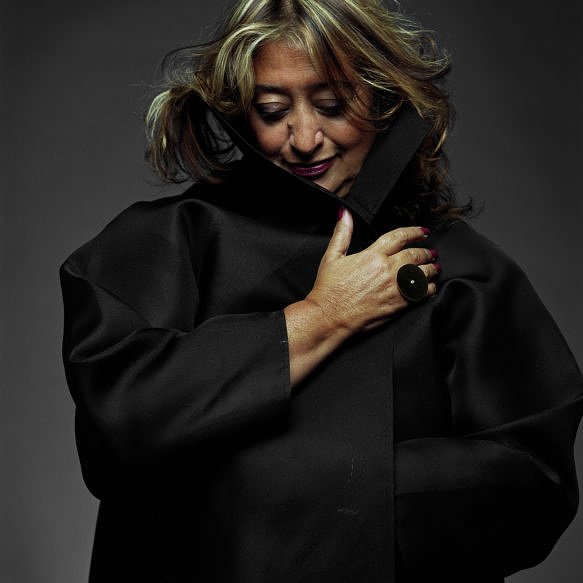
Dame Zaha Mohammad Hadid (31 October 1950 – 31 March 2016) was an Iraqi-born British architect whose work rewrote what buildings could look and feel like in the late 20th and early 21st centuries. Trained first in mathematics and then at London’s Architectural Association, Hadid rose from influential theoretical drawings and competition proposals to a global practice (Zaha Hadid Architects) that produced museums, opera houses, bridges and civic buildings noted for their sweeping, fluid forms and the technical daring required to build them.
Signature projects — built statements of a singular vision
Hadid’s built work reads like a tour of contemporary landmarks that challenged norms of form, structure and public experience:
- Heydar Aliyev Center (Baku, Azerbaijan) — a continuous, flowing envelope that blurs exterior plaza and interior spaces; a now-iconic example of her interest in fluid surfaces and sculptural public form.
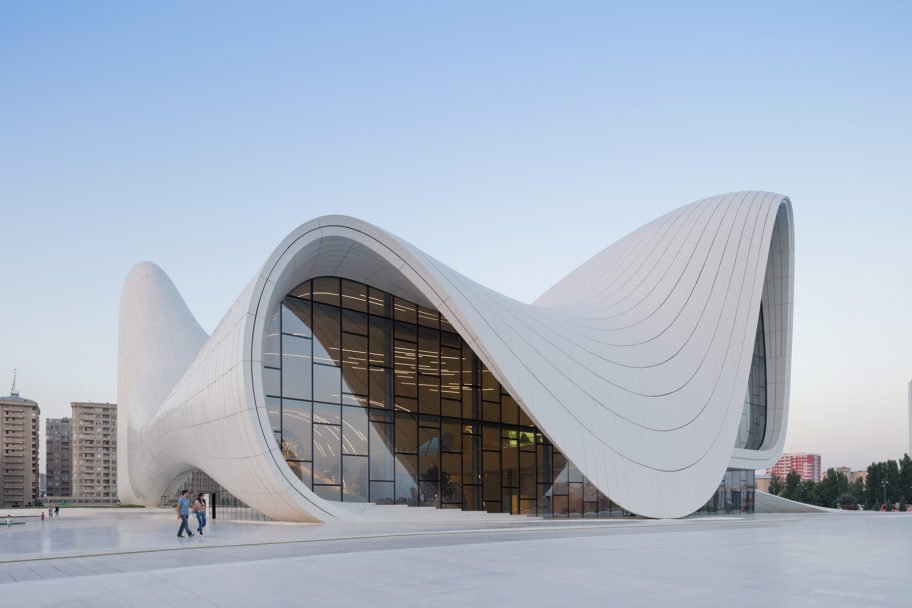
- MAXXI — National Museum of 21st-Century Arts (Rome, Italy) — a network of intersecting concrete trajectories and galleries that rejects the museum-as-object in favour of interwoven circulation and programmatic flow.
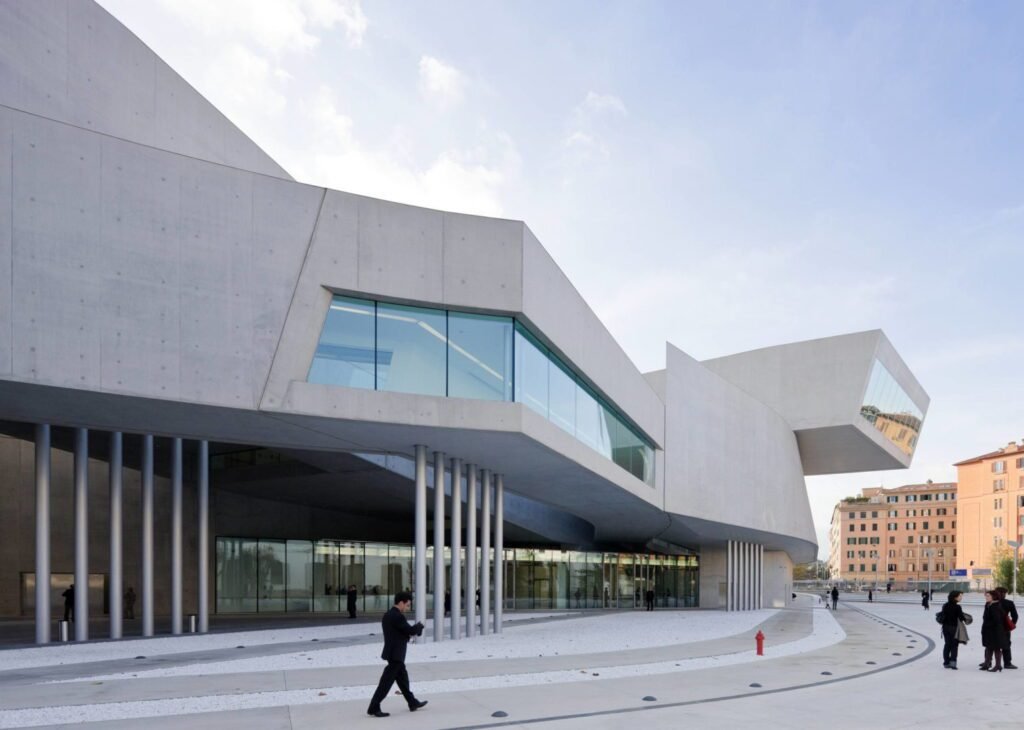
- Guangzhou Opera House (Guangzhou, China) — twin “pebble” volumes on the Pearl River, designed with contoured profiles and interior geometry developed to support both spectacle and acoustic performance.
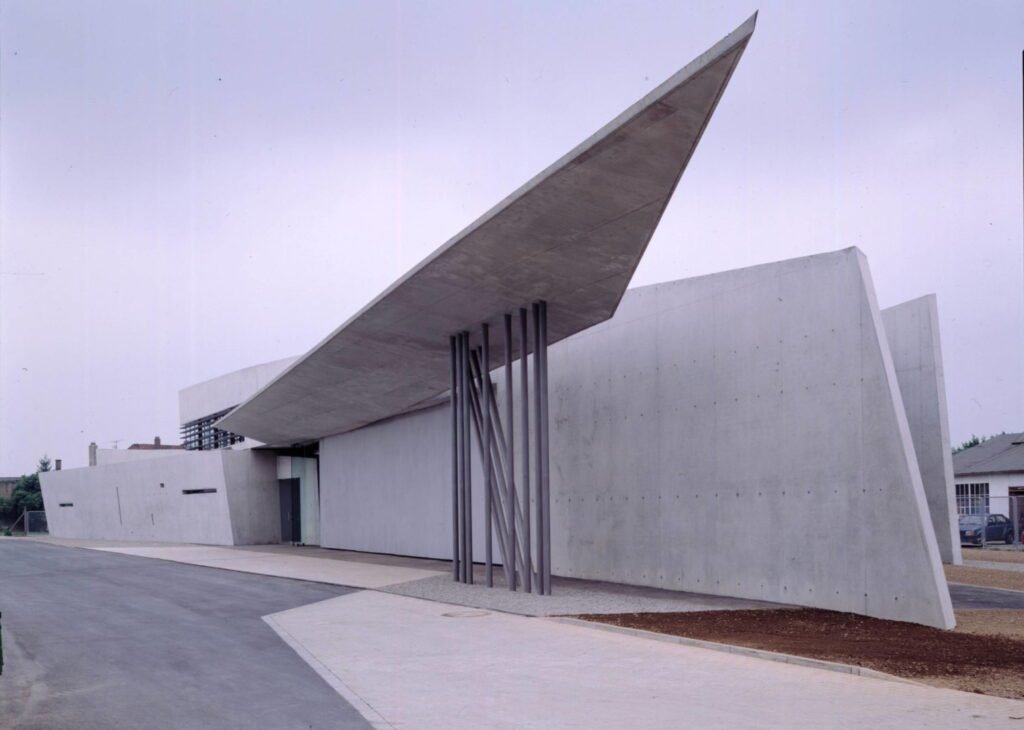
- London Aquatics Centre (London, UK) — an undulating roof and fluid interior inspired by water in motion, designed for the 2012 Olympic Park.
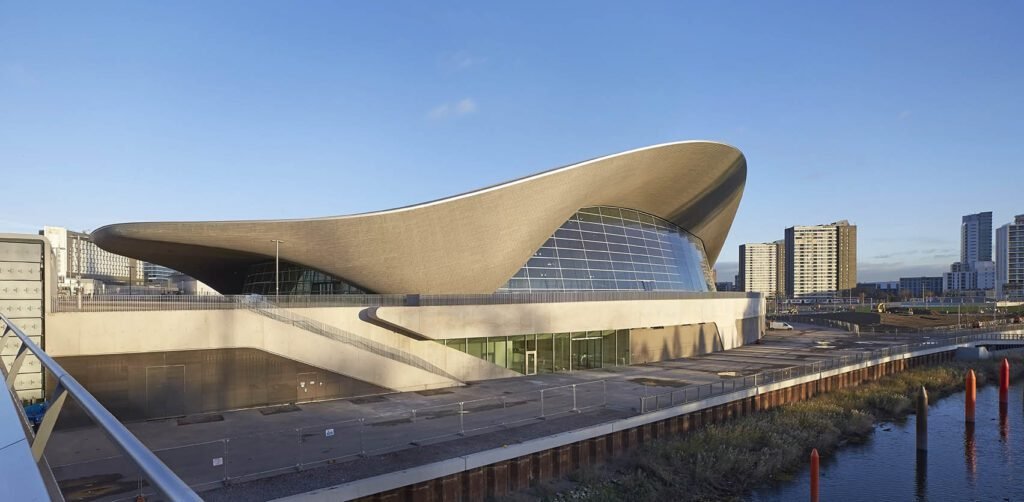
- Vitra Fire Station (Weil-am-Rhein, Germany) and Riverside Museum (Glasgow, UK) are earlier and mid-career works that show her move from sharp, fragmentary deconstructivist geometry toward more continuous, curvilinear forms.
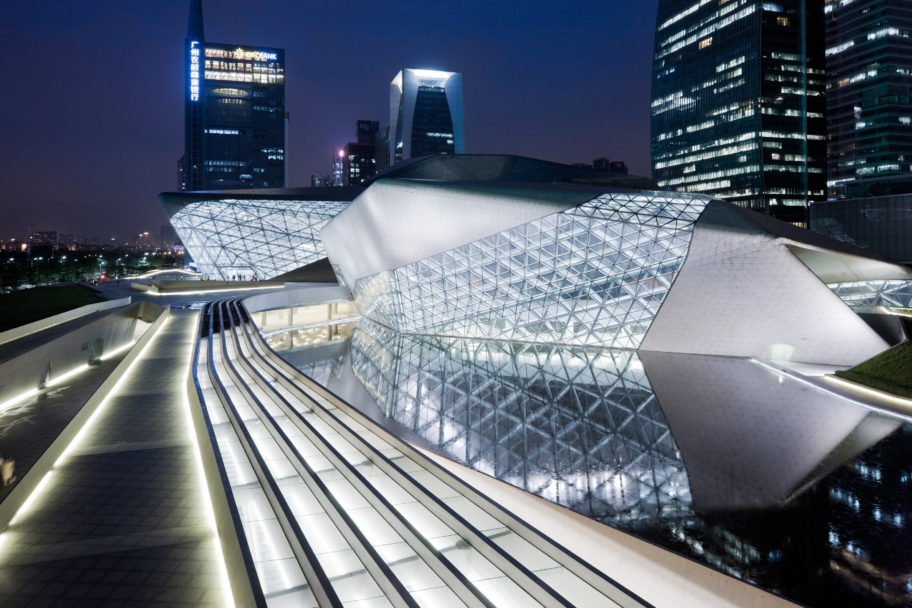
Each project pushed engineering limits — complex steel interfaces, shell and space-frame systems, and precision fabrication — and required close collaboration between architects, engineers and builders to translate expressive geometry into robust, buildable structures.
Architectural philosophy and design approach
Hadid’s architecture is often described in terms such as fluidity, dynamism and fragmentation, but her approach traces back to several consistent ideas:
- Line, movement and topography as generators: Hadid frequently treated drawings — lines and tectonic trajectories — as the fundamental generators of spatial sequence and form. Her earlier, sharp, angular drawings (linked to deconstructivist discourse) later evolved into sweeping, continuous forms that appear to flow across sites.
- Breaking the orthogonal: Hadid famously asked, “There are 360 degrees — so why stick to one?” — a succinct statement of her refusal to accept only right angles and standard orthogonal plans; she sought new spatial possibilities by shifting, folding and sweeping planes.
- Scale-spanning practice: She moved fluently from small objects and furniture to bridges and large civic buildings, treating each scale as an opportunity to explore form, surface and user experience (exhibitions and furniture often informed architectural ideas).
- Use of digital design and computational techniques: While not inventing computational design, Hadid and her studio embraced advanced modeling, parametric tools and digital fabrication to realize complex geometries — processes that helped mainstream what is often called parametric or algorithmic design.
Professional contribution and legacy
Hadid’s impact spans awards, precedent-setting commissions and cultural presence:
- Recognition: In 2004 she became the first woman awarded the Pritzker Architecture Prize, a landmark in a field where top honours had been almost exclusively male. She later received the RIBA Royal Gold Medal (the first woman awarded it individually) and multiple high-profile prizes and retrospectives that confirmed her international influence.
- Expanding possibilities for women in architecture: Her visibility and success — leading one of the world’s most influential firms and delivering major cultural buildings — made Hadid a role model for women architects globally and reshaped expectations about leadership and authorship in architecture.
- Shaping discourse and practice: Beyond individual buildings, Hadid changed how architects think about form, movement and the use of computation in design. Her work accelerated acceptance of free-form, non-orthogonal architectures in public commissions, and her studio’s ongoing output continues to influence generations of designers.
Also Read: Ganesh Bhikaji Deolalikar: Architect of Justice and Nation-Building
Critique and complexity
Hadid’s work attracted both admiration and critique. Admirers celebrate the boldness, theatricality and technical ingenuity of her buildings; critics sometimes questioned functional aspects, cost, and the ethics of certain commissions. These debates form part of her complex legacy: a practice that repeatedly expanded the discipline’s formal vocabulary while provoking discussion about architecture’s responsibilities.
Conclusion
Zaha Hadid transformed architecture by insisting that buildings could be fluid, dynamic and technically adventurous. Her career — from early theoretical drawings to major international commissions — demonstrates how an individual architect’s formal imagination can change construction techniques, public taste and the professional landscape. Today, the language she helped popularize — sweeping curves, complex intersections, and digitally enabled geometry — is part of the mainstream architectural toolkit, and her buildings remain some of the most photographed and debated works of contemporary architecture.
References
- Britannica – Zaha Hadid Biography
- Pritzker Prize – 2004 Laureate: Zaha Hadid
- ArchDaily – MAXXI Museum & RIBA Gold Medal News
- Wired – Guangzhou Opera House Feature
- Zaha Hadid Architects – Official Projects
- All Images Source: Zaha Hadid Architects
Also Read: Frank Lloyd Wright: The Master of Organic Architecture
